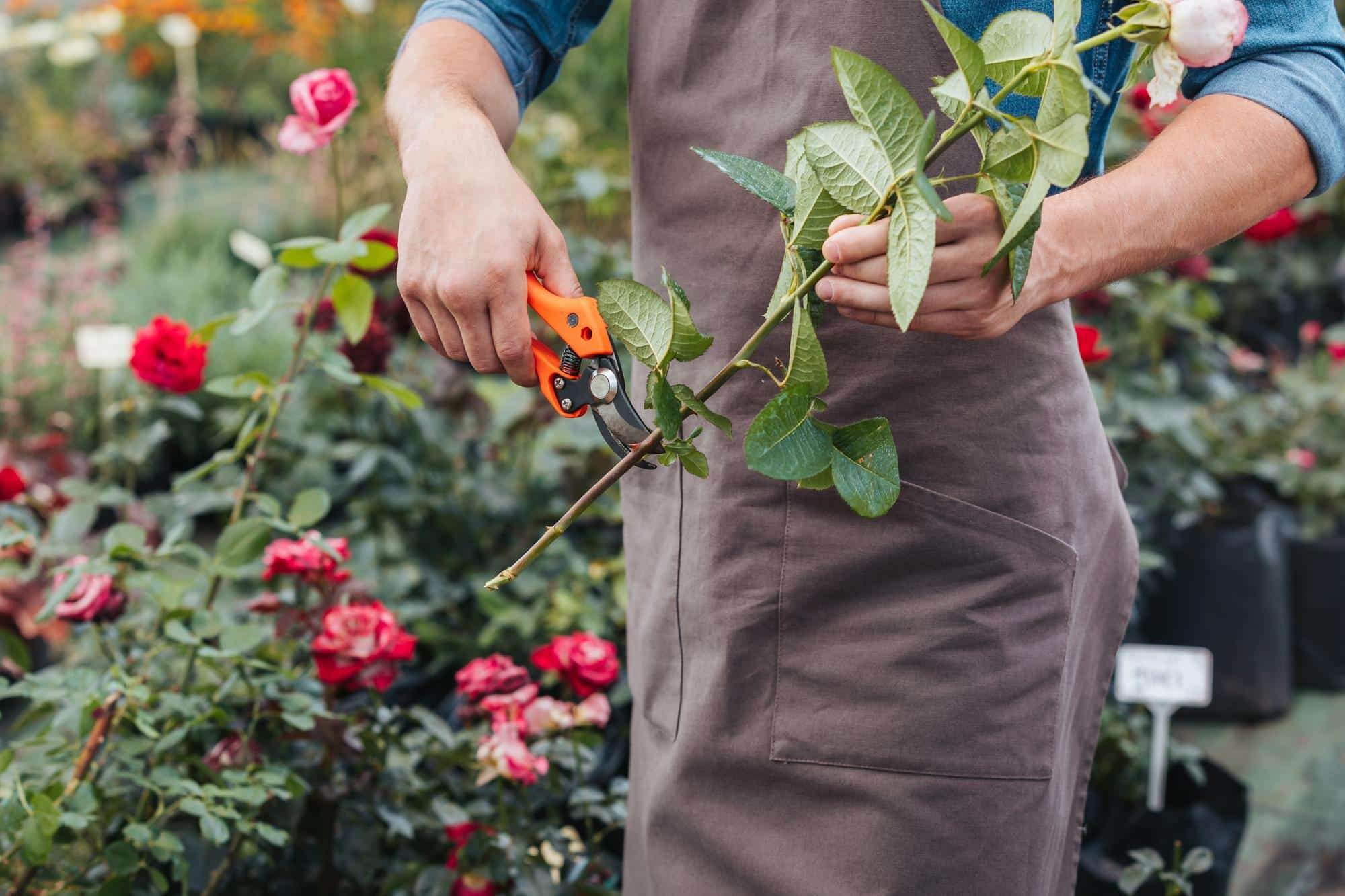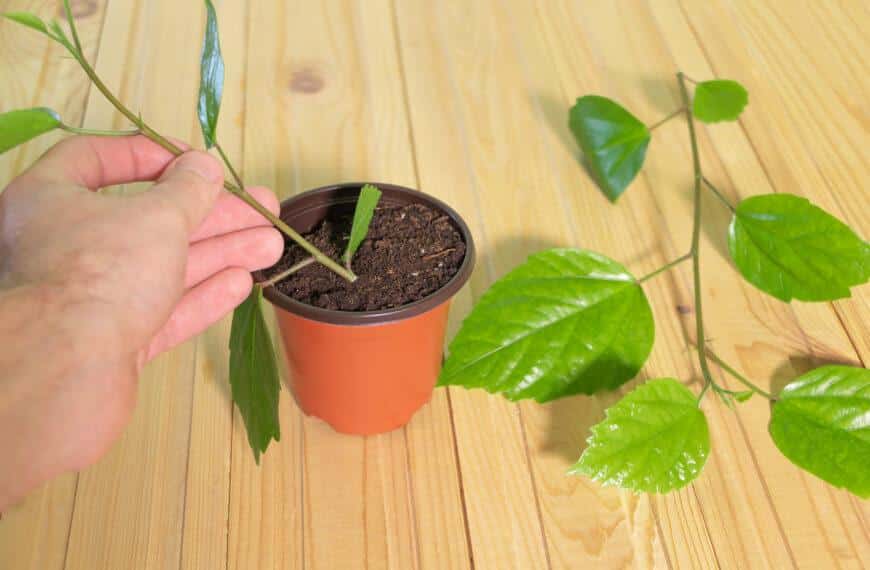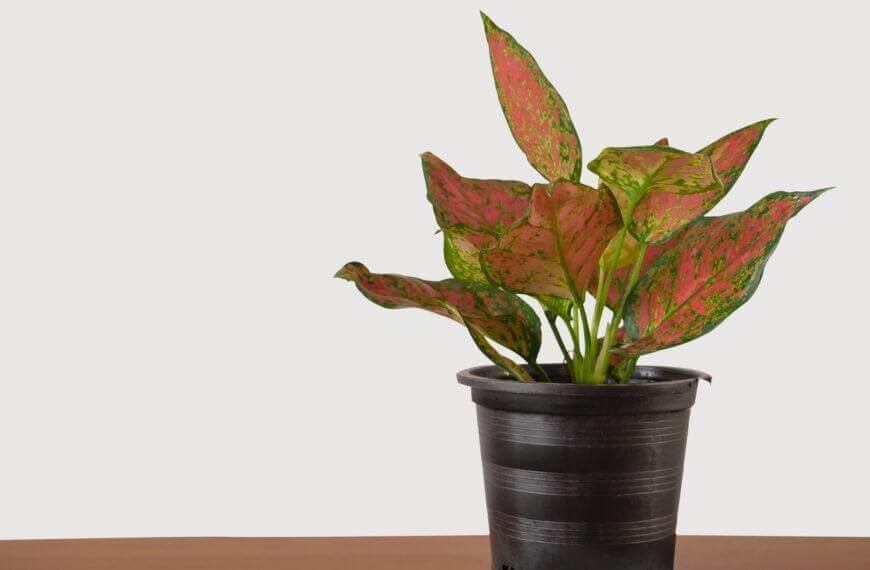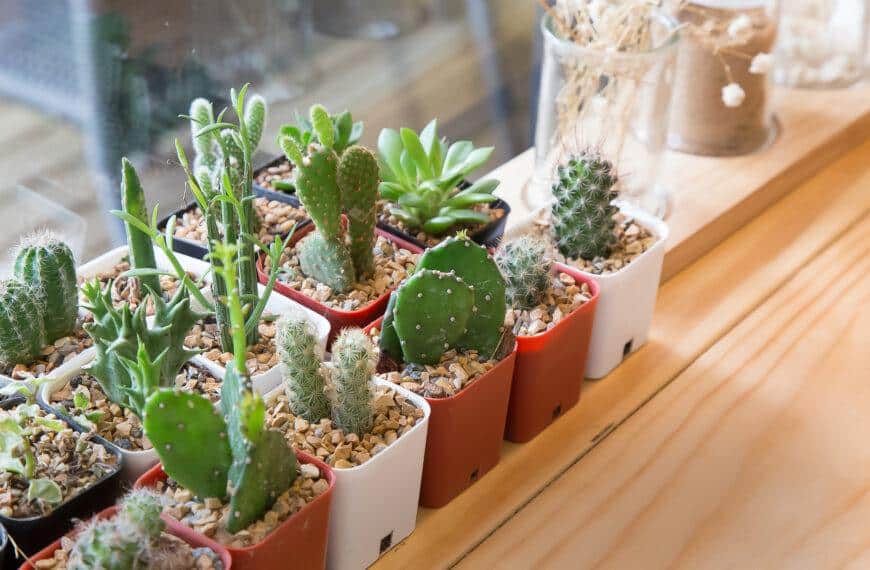- Understanding the Importance of Pruning Indoor Plants
- Tools Needed for Pruning Indoor Plants
- Steps for Pruning Indoor Plants
- Maintaining Healthy Indoor Plants
- Common Mistakes to Avoid when Pruning and Maintaining Indoor Plants
- Choosing the Right Indoor Plants for Pruning and Maintenance
- Frequently Asked Questions
Understanding the Importance of Pruning Indoor Plants
It’s essential to prune indoor plants regularly for their health and appearance. Without proper pruning, growth can be stunted and air circulation and sunlight absorption reduced – risking the plant’s survival. Pruning involves removing dead/diseased leaves, cutting branches interfering with light/airflow to optimize resources for better health/yield.
It also keeps plants disease-free by cutting out infected parts before they spread. To ensure this, sterilize tools before use and inspect for damage. Don’t ignore pruning needs or you risk endangering your indoor plants. Monitor and adjust watering schedules, and give them the right amount of light to extend their lifespan. Time to sharpen those pruning shears and get to work!
Tools Needed for Pruning Indoor Plants
Get equipped with the right tools for pruning your indoor plants. Here are some of the must-haves:
- Pruning Shears
- Scissors
- Gloves
- Clean Cloth
Keep blades clean and sharp to avoid harming your plants. Dip the blade into a 1:9 bleach-water solution after each cut. By using the proper tool and technique for each job, you’ll guarantee the health of your plants and your safety too! Make regular pruning part of your routine for healthier plants. Look out for brown tips and prune accordingly – it’ll help your plants in the long run. And remember, pruning your indoor plants won’t be as hard as cutting ties with toxic friends!
Steps for Pruning Indoor Plants
Pruning Indoor Plants: A Comprehensive Guide
Pruning is an important aspect of plant maintenance that can greatly enhance their growth and health. Here are six simple steps to follow when pruning indoor plants:
- Assess the plant’s growth pattern and determine where to prune.
- Use clean, sharp pruning shears to make precise cuts at a 45-degree angle.
- Focus on cutting damaged or diseased branches first, followed by any overcrowded, weak or spindly ones.
- Be careful not to over-prune, as it can cause undue stress and shock to the plant.
- Sterilize your tools after each use with rubbing alcohol to prevent the spread of diseases.
- Use a clean cloth to wipe off any debris or sap left after pruning.
To ensure healthy indoor plants, it is essential to regularly prune and maintain them. Pruning helps remove dead or diseased branches, promote growth, increase air circulation, and prevent pests and diseases.
Additionally, it is important to prune your plants at the right time of the year. Some plants thrive when pruned in the spring or fall, while others benefit from pruning throughout the year.
Don’t miss out on the benefits of maintaining healthy indoor plants. Get your pruning tools and start taking care of your plant’s growth and health today!
Don’t let dead or dying leaves in your plant be a metaphor for your life, it’s time to prune them both.
Identify Dead, Dying, or Diseased Leaves and Stems
Maintaining indoor plants is essential! Here’s a 4-step guide to identifying dead, dying or diseased leaves and stems:
- Examine the plant. Check for wilting, discoloration or yellowing.
- Gently touch the leaves and stems. Are they mushy or brittle? If they crumble, the plant is likely diseased.
- Look out for signs of pests like spider mites or whiteflies.
- Use sterilized pruning shears to cut off dead, dying or diseased parts – make sure the cut is slightly higher than where the stem branches out.
Remember: Different plants have individual needs, so research them beforehand! After pruning, dispose of the removed parts properly so pests won’t spread.
Pruning is key to keeping your indoor plants looking good and healthy – start giving them proper care today!
Remove Yellow and Brown Leaves
Identify decaying leaves on your indoor plants and act quickly! Follow these 6 easy steps for removing yellow and brown leaves:
- Spot the yellow or brown leaves.
- Clean your tools with rubbing alcohol or soap water.
- Cut off the leaves at the stem.
- Dispose of them properly.
- Monitor the environment and make any corrections.
- Check frequently and repeat the process if needed.
Also, wear gloves when handling indoor plants to avoid irritation. Prune away those decaying leaves and prevent FOMO. You’ll take your plant from scruffy to stylish in a jiffy!
Cut back Overgrown or Leggy Branches
Pruning Indoor Plants: Snipping Overgrown or Leggy Branches
For a lush and healthy indoor garden, it’s important to prune regularly. So, snip away those overgrown or leggy branches. Streamline the shape of your plant and keep foliage dense.
Step-by-Step Guide:
- Spot any long or thin stems that don’t belong.
- Look for a node or “eye” on the branch.
- Get a pair of sharp, sterile pruning shears. Make an angled cut at the node, ¼ inch above it.
- Repeat for all affected stems till you’re satisfied with the new shape.
- Throw away all pruned branches in the trash, compost, or other feeding source.
- Prune every few weeks to avoid future growth.
Be sure not to cut too much at once, as this can stress your plant and harm its health.
Pro Tip: Put the cuttings in water vases indoors for extra greenery around your space. Pruning your indoor plants is like giving them a fresh look – but without the complaints!
Control Plant Size and Shape by Pinching or Pruning
Indoor plants have many advantages – like purifying the air and beautifying your space. Controlling their size and shape can be tricky though. But no need to worry! Pruning is a great way to get the desired plant form.
We’ve got a 6-step guide for pinching or pruning plants:
- Determine which parts of the plant need pruning
- Pick the right tool for trimming
- Cut a 45-degree angle, about a quarter-inch above a leaf node
- Don’t remove more than one-third of the plant at once
- Don’t cut into old wood as it could lead to dead branches and stubs
- Clean and sterilize your tools after pruning to prevent plant diseases.
Pruning is a great way to shape your plants, but don’t overdo it – it can be harmful in the long run. And remember, some indoor plants require specific techniques for successful growth.
For lush, healthy plants, make sure to research each one’s unique care needs. That way, you’ll reap all the benefits of having indoor plants in your home!
Maintaining Healthy Indoor Plants
Maintaining the Health of Your Indoor Plants
To ensure that your indoor plants thrive, regular upkeep is crucial. By providing optimal growing conditions, you can prevent common issues such as pest infestations, leaf drop, and wilting. Adequate lighting, consistent watering, and proper fertilization are key to keeping your plants healthy.
Additionally, monitoring the humidity levels and soil moisture is important for most indoor plants. Some plants, such as succulents, require infrequent watering and well-draining soil. On the other hand, others such as ferns require moist soil and a more humid environment.
To further prevent issues, regularly inspect your plants for any signs of damage or disease. This will allow for early detection and treatment, ultimately increasing the chances of your plants thriving.
Don’t miss out on the beauty and benefits of having healthy indoor plants. Keep them happy by providing them with the care and attention they deserve.
“Why water your plants when tears from your dead ones work just as well?”
Watering and Fertilizing Tips
It’s important to get the Watering and Fertilization of your Indoor Plants just right. Here’s what you need to know:
- Watering: Don’t overwater or underwater. Keep the soil moist, but not soggy. Use room temperature water and let it drain out from the bottom of the pot.
- Fertilizing: Use a balanced fertilizer with equal amounts of Nitrogen, Phosphorus, Potassium, and follow instructions carefully. Too much can harm your plants.
- Frequency: It all depends on the plant’s species and environment. Regularly check soil moisture levels by sticking your finger two inches below the surface.
Monitor your plant’s growth and make adjustments to watering and fertilization if needed.
Did you know that over-fertilizing can stunt growth? Studies show that using too much chemical fertilizer has a negative effect on plant biomass production. So, make sure your soil is well-drained and loose – like your ex!
Soil Management and Potting
Maintaining healthy plants at home requires attention to Soil Nutrition and Potting. The right balance of nutrients in the soil can boost growth and health. Also, suitable pots determine root placement, which impacts nutrient intake and plant growth. Select soil mixtures and pots that meet the needs of each species.
For a thriving indoor garden, choose nutritionally-dense soils and well-draining pots with drainage holes. Healthy soil leads to healthy plants, yielding better results and beautiful greenery. Re-potting may be necessary, but avoid one-size-fits-all potting schedules, as various plants need different sizes.
As Jim Fowler said, “It matters what type of pot your plants grow in, not just feeding them.” Practicing good Soil Management and Potting Practices will ensure optimal plant growth and happy plant life in your home. Remember: keep your plants healthy and your enemies closer, for pests and diseases never leave.
Controlling Pests and Diseases
Indoor plants can be prone to pests and diseases which can spread quickly and cause serious harm if not managed properly. Here’s a 3-step guide to managing them:
- Prevention: Before adding a new plant, make sure it’s clear of pests. Check plants regularly for signs like yellowing leaves or stickiness. Keep the growing area clean by removing dead leaves and debris.
- Identification: Use a magnifying glass and online resources to identify the pest or disease accurately.
- Treatment: Try non-toxic solutions such as natural insecticides or homemade remedies like neem oil, garlic spray or soap solution. Remember that success depends on persistence, observation and experimenting with different solutions.
Make sure you don’t let those pesky pests ruin your hard work! Follow these steps to ensure your indoor garden is healthy and happy for years to come. Also, don’t forget that trimming indoor plants is like giving them a haircut – do it wrong and they’ll look like a mess!
Common Mistakes to Avoid when Pruning and Maintaining Indoor Plants
When caring for indoor plants, there are common mistakes that can cause their demise. Knowing proper plant care helps to avoid these blunders. Here are five things to be aware of:
- Don’t overwater. It can lead to root rot and other health issues.
- Don’t prune too much. Cutting off more than a third can stunt or kill the plant.
- Use the right soil mix and fertilize properly.
- Light levels must be suitable for the plant.
- Deal with pests quickly.
Be sure to understand the individual plant’s needs for water, light and humidity. Research each plant to ensure its health. Pruning has a long history dating back centuries. It is still important to help promote healthy growth in plants today. Choose indoor plants that won’t mind your gardening skills!
Choosing the Right Indoor Plants for Pruning and Maintenance
Maintaining healthy indoor plants is essential. So, selecting the right ones is key! Here are a few tips to help you out:
- Choose plants that you can provide the right level of care for.
- Take into account your space before choosing a plant type.
- Pick the pot size based on the expected size of the plant.
- Avoid plants that are prone to diseases and pests.
- Choose plants that work well with your indoor environment.
It’s important to note each plant type needs a unique level of pruning and maintenance. Research each one before adding it to your indoor garden.
Don’t forget, indoor plants bring peace and tranquillity. Don’t miss out on creating a serene living space by neglecting this vital factor in houseplant care.
Frequently Asked Questions
1. What is pruning?
Pruning is the process of cutting back certain parts of a plant, such as stems, leaves, and roots, to promote growth and maintain its health.
2. When should I prune my indoor plants?
The best time to prune indoor plants is during their inactive growth period, typically in late winter or early spring. However, if you notice any dead or diseased parts, you should prune them immediately.
3. How much should I prune?
The amount you prune depends on the type of plant and its specific pruning needs. Generally, you should remove any damaged or dead growth, as well as any branches or stems that are crossing or rubbing against each other. Avoid pruning more than one-third of the plant at once, as this can shock the plant and hinder its growth.
4. How often should I water my indoor plants after pruning?
After pruning, it’s important to water your plants carefully to avoid overwatering them. Wait a few days after pruning before watering to allow the plant to recover. Then, water as usual, but be sure to check the soil moisture level to ensure you’re not over or underwatering.
5. What tools do I need for pruning?
For most indoor pruning tasks, you’ll need a pair of sharp, clean shears or scissors, as well as a pair of gloves to protect your hands. You may also want to have a spray bottle of water on hand to mist the plant after pruning, which can help promote new growth.
6. Can pruning help revive a struggling plant?
Pruning can sometimes help revive a struggling plant by removing dead or diseased growth and promoting new growth. However, it’s important to make sure you’re addressing any underlying issues, such as pests or improper watering, before relying solely on pruning to revive the plant.




